
- After losing my Friends the Elms to fatal Disease back in 1970’s. I am grateful to be here for Elms friends…the Ashes. During their time of great need.
- The only thing stupider than treating all the Ash trees, is protecting none at all. S.C. ’08
-
- ________________________________________________________________________________________
Even more dangerous than emerald ash borer itself has been professionals claiming EAB infects or diseases trees, inoculations required for rest of trees live, treatment less than optimal success, products very expensive.
Every above fact is for Dutch elm disease, which emerald ash borer management has not one thing in common with.

Making best well informed decision prevents foolish waste of money
As an professional arborist I can tell you the most difficult thing about saving ones tree is just making decision to do it.
If you can afford $20-$35 and skilled enough remembering each April to pour bucket of water containing generic imidacloprid around your tree.
Or can spend $6 per DBH, on average $60-$145 depending on its calculated trunk size. Asking a professional to inoculate your family tree utilizing the medium high dose containing Tree-Age every 3 years.
Also available are Tree-Azin Aza-Sol, several natural organic derivatives produced by India’s neem tree containing Azadirachtin applied every or every other year for less than $60 per tree.
Once low numbers of borers in your region no longer have thousands of local trees to build up bug populations with. low numbers of remaining EAB, and low numbers of remaining ash trees. Scientifically signals official end to fatal infestation populations!
You can wear a t-shirt that says: My tree and I survived worst Urban Tree disaster ever
I PATRIOTICALLY DEFENDED MY AMERICAN HARDWOOD FROM CHINA IMPORT DURING TRUMP PRESIDENCY.
_______________________________

______________________________
- For 160 Million years, our continents Ash Family had lived right in your local neighborhood. In the ecology Yearbook as early graduating class of “Flowering plants”.
 Still standing! Almost 75% of Ash trees ever planted across United States over last 135 years are still standing today only to face EAB’s arrival. This after surviving history’s most severest storms and harshest winters .
Still standing! Almost 75% of Ash trees ever planted across United States over last 135 years are still standing today only to face EAB’s arrival. This after surviving history’s most severest storms and harshest winters .
Protected trees weathering waves of borers similar to decade long out of control forest fire, inevitably passing through once no more trees left to burn.

Expensive is what some professionals charge for performing a miracle.
It is important for all Ash owners to know, how god sent easy it is to rescue all remaining live portions of even worst damaged trees once correctly inoculated against EAB. Without any continued signs of decline, and instead begin vigorously recovering once trees are EAB free. If tree removal costs over $600, managing tree with inoculations better option.
_________________________________________________________________________
A natural disaster never witnessed by humanity, involving the unprecedented loss of an ecosystems most influential “Keystone” species, is presently unfolding right outside everyone’s back door. Regardless whether an endangered Ash grows in ones yard, or not. And since it had been most superior urban surviving species beautifying every park, school, town square and American boulevard for our nations last 200 years. U.S. neighborhoods across the continent will be loosing their oldest living community members. Humans will survive event, and most will barely notice. But America’s forests and Wetlands will be “Broken”.
 OAK PARK IL. 152 OLD GREEN ASH Funeral video https://youtu.be/cd9jEu5IHxc
OAK PARK IL. 152 OLD GREEN ASH Funeral video https://youtu.be/cd9jEu5IHxc
Because Borers kill off all wild Ash saplings before young trees reach seeding age of Ten, or after reaching only 1″ DBH in stem size. 26 individual Species belonging to the North American Fraxinus Genus will inevitably become Functionally Extinct, from Canada down to Panama.
Including black ash, blue ash, green ash, red ash, pumpkin ash, white ash, Brown, Velvet Ash, Texas Ash, Oregon Ash, Desert Ash, Single leaf, Biltmore, Excelsior, Swamp Ash, Arizona Ash, Patmore and Mexican varieties. The State of Michigan lost 7.5 billion trees, and Minnesota is expected to lose 5.5 billion. Chicago regions 13 million Ash trees, killed off within a biblical four year timespan, once produced Northern Illinois largest portion of living Green seen from space.
Dutch Elm disease had only killed off 600,000 Elms since arriving to the Windy City area 45 years ago. And only 100 Million Elms lost across United States since DED’s arrival in 1930’s.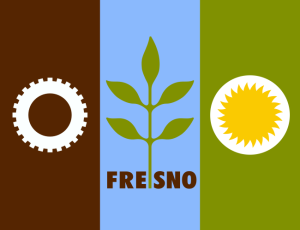 Scientists can only guess, that by the time California & Mexico inevitably lose their collections of native & planted Ash (Ash is Fresno in Spanish), more than One trillion trees will already have had succumbed to our era’s Costliest disaster ever.
Scientists can only guess, that by the time California & Mexico inevitably lose their collections of native & planted Ash (Ash is Fresno in Spanish), more than One trillion trees will already have had succumbed to our era’s Costliest disaster ever.

SCIENTIFIC CLASSIFICATION
American Ash represents the Third ancient progenitor of worlds Fraxinus genome. Containing over 80 individual tree types found throughout our Planets Northern Hemisphere. It belongs to the very long lived Olive tree Family of Oleaceae. Along with species such as lilacs, jasmine, privet, fringe trees, and Forsythia.
Just over a century ago scientists classified Ash as Keystone species of our continents Elm-Ash-Cottonwood ecosystem. Blue Jean dye produced from Blue Ash bark.
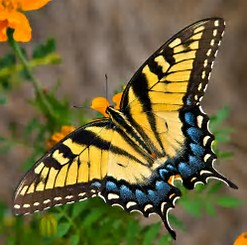
44 Arthropods, Lichen etc. exclusive to only living on Ash, will become Co-Extinct as well. 333 Native species utilizing Ash as a Primary source, will be shunted to lesser resources facing higher demand.

Making each individual Treated tree an isolated island of protection for MANY critically endangered species.

North American native ash tree species are used by North American frogs as a critical food source, as the leaves that fall from the trees are particularly suitable for tadpoles to feed upon in ponds (both temporary and permanent), large puddles, and other water sources. Leaf litter enables frog larvae to grow larger, develop faster and survive better than larvae from other litter treatments.
NATIVE ELM AND CHESTNUT NEVER “WENT” EXTINCT, WHY WOULD ASH?
Wild Elm species continues to survive, since Dutch Elm Disease only kills older trees that have had time to seed new generations. Few wild American Chestnuts still survive today as short lived stump shoots produced from old root systems which cannot seed new generations. Wild Ash is completely killed off before seeding new offspring, or through new root shoots. So answer is, both American Chestnut & American Ash face possible “Functional Extinction” in the wild. Since neither are able to produce offspring.
Arbor day celebrations actively protect existing trees, by reminding owners that April is American Ash tree Awareness month. And time to treat Ash trees!

Living Seed bank collections By presently saving few wild Ash growing deep within forest or wetland settings. Preservation of seed producers can help bring species back in future. Humans collecting and preserving seeds from each local Ash species, can pass on to National seed bank preservation vaults for extended storage. Otherwise improperly stored Ash seeds are only viable for four years. While immediately in danger from nematode that mortally damages seeds hitting ground before even collected.

Classified as “Functionally Extinct”, Ash cannot Grow back.
Presently just 5 out of 300,000 scattered individuals of Primarily Green Ash have been found totally fending off local EAB infestations. But no wild survivors belonging to Red, White, Blue or Black species of Ash.
Surviving examples are not “Lingering Ash”, which is defined as already borer damaged trees still surviving after surrounding ones have already died off. Within a few years, lingering Ash inevitably succumb as well.
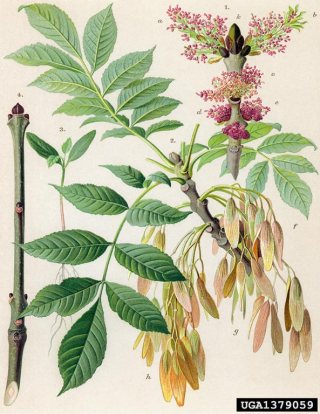
“Orphans” are sapling trees under 1″ DBH in stem size, produced by last of forests older maturing trees before all killed off. Along with limited number of older survivors, todays Orphans are only thing standing between species functional extinction in wild, and its continued existence.
If enough Ash trees remain once borer populations crash, rebounding tree populations can then work on evolving a natural resistance to borer attack.

Good news at least, for last remaining wild GREEN Ash trees already beginning to recover naturally.
As of 2016, Newest survey results in Michigan forests regularly observed over last 15 years, reveal growing numbers of surviving trees between ages of 15-30. Observations of older saplings surviving long enough to produce their own seed mast, have also become an common occurrence in locations. By surviving continued “stem girdling” damage from remaining borer population. Other reports within same Michigan region show, even after 15 years borer populations still remain high enough to continue fatally damaging any remaining unprotected trees still presently surviving.
___________________________________________________________________________________________

THE CITY OF CHICAGO’S NAMESAKE RAMP ONION {Allium tricoccum} THREATENED BY TODAY’S BIBLICAL IN SCOPE EVENT…
The name Chicago is derived from the local Indian word chicagoua …for a nodding plant that did not grow on the wide open “Treeless” Prairie like many assume today. But is still found presently within a unique forest ecosystem titled the “Sugar Maple-American Basswood-American Ash”, named after living systems most influential species.
CHICAGO: MEANING OF THE NAME http://www.earlychicago.com/essays.php?essay=1
Interestingly our regions first inhabitants called The Chicago river, “Skunk creek”. Which was not dredged & widened to allow Schooners access upstream, until much later. Before urban sprawl, these old growth Maple-Basswood-Ash forests could be found growing alongside the Chicago creek at Bridgeport. And made up “The Big forest” once found just North of the river, where River North exists presently. And spreading all the way up past Devon Av. into Evanston, where a small portion still exists as wild preserves today. On the East side of this ancient forest between the lakeshore, is where our regions last stands of Native Conifers still held out since the prehistoric Glaciers began retreating some 11,ooo years ago.

MANKIND’S INTRINSIC SPIRIT, ENTWINED WITH NATURE AND GOD
Ash, or Fraxinus in old Latin, played such a crucial role in one iconic Bible story, by sustaining Jewish exodus out of Egypt wandering lifeless desserts for 40 years. Every Temple, Church and house of worship founded over past millennia, was guarded by “Manna Ash” trees faithfully planted by their past parishioners & congregations. Along with the short crooked growing Dogwood tree, which after Christ’s crucifixion, no longer produces straight enough wood to build human crucifixes from.
In a modern botanical context, manna is secretions of sugars obtained by evaporating the sap of the manna ash, extracted by making small cuts in the bark.

Cultural names like Ashley, etc., trace origins back to old world Europe where local Ash tree species were considered Queens and Kings of the natural world.
Junginger, a wild Variety of American White Ash selected for its Purple leaf color. Discovered by University of Wisconsin Horticulturist Karl Junginger of McKay nursery, Waterloo, Iowa. Introduced publically in 1956, it quickly became the Most popular and most expensive landscape selection. Surpassing even the high priced Ginkgo, London Plane & White/Burr Oak.

White Autumn Purple ♪ ♪
Where White Ash has proved its individuals can thrive alongside urban humans for over 400 years, new plantings of Burr or White Oak are considered lucky if they can survive their first 50 years.
^^^^^^^^^^^^^^^^^^^^^^^^^^^^^^^^^^^^^^^^^^^^^^^^^^^^^^^^

/\/\/\/\/\/\/\/\/\/\/\/\/\/\/\/\/\/\/\/\/\/\/\/\/\/\/\/\/\/\/\/\/\/\/\/\/\/\/\/\/\/\/\/\/\/\/\/\/\/\/\/\/\/\/\/\/\/\/\/\/\
America’s Settlers learned from Indians, that native White Ash trees can live just as long as Burr & White Oak. And even longer than Elm, Sycamore, and Sugar Maple.
Trees in the America’s Midwest have evolved to produce the largest leaves, tallest height, best Bark patterns, monumental sized trunks and most spectacular spreading crowns. And because of mid America’s ancient continental soil, glacial till and other ingredients. Our trees produce the world’s most spectacular spectrum of way out colors in fall.

Details on Municipal EAB preparation & planning concludes blog
Faced with harsh urban environment and present cultural landscape practices.
Ironically one would have more success planting a new parkway Ash, and temporarily treating it. Than planting with Maple, Linden, or even both Oak families. Seriously!
TREE OWNERS BE AWARE! MANY CERTIFIED PUBLIC & PRIVATE ARBORIST LACKING PERSONAL EXPERIENCE REGARDING CONTROL OF EAB. INSTEAD RELY ON PAST METHODS MANAGING FOR DUTCH ELM DISEASE. THIS IS CAUSING PROFESSIONALS TO CONTINUALLY SUPPLY SCIENCE FICTION. NOT SCIENTIFIC FACT. SINCE THERE IS NOT ONE DETAIL IN COMMON BETWEEN E.A.B. & D.E.D.
ANY ARBORIST WHO CLAIMS EAB INFECTS OR DISEASES TREES, TREATMENT EXPENSIVE, HAS POOR SUCCESS RATE, NEEDED FOR LIFE OF TREE, ONLY PROLONGS THE INEVITABLE, ASH OVERMATURE AFTER AGE 80, SHOULD BE IMMEDIATELY REPORTED TO INTERNATIONAL SOCIETY of ARBORICULTURE OFFICIALS AFTER SUPPLYING SUCH RECKLESS OUTDATED INFO.
RESPONSIBLE ARBORISTS NEED TO EDUCATE OWNERS WITH PROVEN OPTIONS, IN ORDER TO MAKE WELL INFORMED DECISIONS, REGARDING LIFE & SAFETY OF THEIR FAMILIES TREE.
Frank Lloyd Wright “wild” Green Ash, Age 150-160, Oak Parks oldest “Protected” tree. Arthur Heurtley House on Forest Avenue
During the Midwestern Prairie style ecology and architectural movement era of the late 1800’s world renowned figures such as Jens Jensen, F.L. Olmsted and Frank Lloyd Wright utilized both Ash & Elm as main ingredient when landscaping public parks and private properties they designed & built.

THE EXTINCTION WILL NOT BE TELEVISED
TODAYS MASS TREE KILLING EVENT HAS OFFICIALLY BECOME THE COSTLIEST MAN MADE NATURAL DISASTER TO EVER HIT PLANET EARTH.
REMEMBER, ONLY UNPROTECTED TREES SUCCUMB TO EAB
Owners Should Decide If Tree Lives Or Dies…Not EAB.!
ASHLAND AVENUE’S NAMESAKE GROVE OF TREES
In 1812, Henry Clay, American lawyer, politician, and skilled orator who represented Kentucky in both the United States Senate and House of Representatives, owned a productive 600-acre (240 ha) plantation, which he called “Ashland” in Lexington Kentucky.
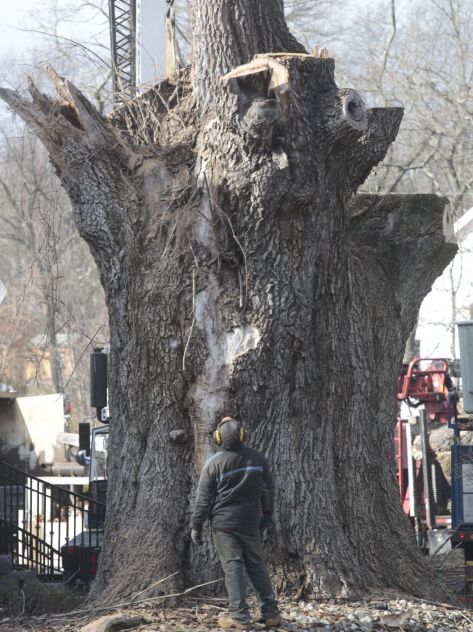
Cultural heritage
Officially categorized by our nation’s first naturalists as America’s best urban surviving tree species most popularly planted since our country’s founding over 200 years ago, Green Ash and Blue Ash has been documented living out 300 years, and Iconic White Ash well proven to survive six centuries or more.

Thomas Jefferson’s planted Green Ash still proudly standing today, 200 years later at his Monticello property is being successfully protected by National park service. Along with Washington’s 250+ old White Ash young George did not cut down alongside families “Can not tell a lie” Black Cherry tree.
First nation Indians discovering the Americas over 13,000 years ago, regularly fashioned young White Ash & White Oak into long lived Trail marker trees which even survive to this very day.
Jefferson Ash Monticello
Since arriving settlers could not successfully plant longest lived Oak types such as Burr or White because of uniquely evolved species lengthy Tap root system problem tree nurseries could not concur. Europeans, especially Germans & English who held highest traditions for their homelands mystical old Ash groves, and when searching out virgin land to farm and build new communities had been greeted by Americas ancient Ash tree groves which like a spiritual omen, called out for them to steak their own families roots next to. This is the same story found on page one of Countless communities local history books across the Midwest.

Its prehistoric legend quickly allowed Ash to became common man’s Oak, even boasting a much longer list of qualities since not even the most heartiest of Oak species could survive such constant pleasures of harshest City life. Municipalities, Parks, and property owners wanting only the best, chose to plant American Ash in most prominent locations. Along with hearty American Elm during its species planting fad beginning in the 1880’s, until downfall after Dutch Elm disease introduction.

I have just hastily added these new details from Scientific community, officially declaring City of Chicago’s E.A.B. management program implemented in 2009, a total success as of July 2017. Documenting 60,000 public treated trees, which have now survived through the most damaging “Infestation population” period.
Trees can now be retreated every Four years using same dose rate. In 2006, Chicago began EAB event with 120,000 individual Ash trees. As of Winter 2016, ALL 60,000 unprotected City Ash completely killed off by Borers had been removed.
Chicago had been one of first cities to discover, that a treated tree is “The Cure” everyone has been praying for! Which besides protecting Ash, successfully controls and dramatically lowers spread of local EAB populations. After turning each individually protected tree into living EAB bug zappers!
City public treated trees lower local borer populations so dramatically, that many private untreated trees growing in backyards and public parks survive some three or more years longer.


Chicago spent $30 every 3rd yr., or $120 total after 10 years to successfully rescue and protect above pictured tree. Verses Union removal cost of $1200 per tree.
After Carrier Pidgeon’s blackened North American skies with their almost infinite populations each fall for countless Millennia, no one imagined species could ever become completely Extinct within 50 years.
Surviving since the arrival of European settlers 180 years ago, America’s last .01% of original hardwood bottomland forest and existing wetlands will be forever devastated after first losing all maturing Elms over last 40 years to disease, and now the total Extant of American Ash forests within three years of local detection. Yet just like the final demise of America’s passenger pigeon, not one word or mention about today’s event has been written, nor televised.

DO LIVING TREES REALLY RECYCLE POLLUTION INTO FRESH AIR FOR US “BREATHERS”?
If EVERY tree was cut down in our region, oxygen levels would remain the same! But presently, humans with already poor health such as respiratory disorders have been detrimentally affected so far from today’s mass loss of urban & forest tree populations. Scientists admit they have absolutely no idea on how the loss of an ecosystems keystone species influencing so many other life forms will directly and indirectly affect local ecologies wildlife, since something like this has never been observed by mankind during its existence.
ONE NEED NOT TRAVEL TO THE AMAZON RAINFOREST IN ORDER TO SAVE & PROTECT LIVING EXAMPLES OF THREATENED & ENDANGERED SPECIES

Ironically human treated trees have now become a living sanctuary protecting 28 individual native species harboring endangered DNA, which thankfully have been discovered to be totally unaffected by insecticide products utilized against Asian EAB.

Native and introduced Parasitoids

HOW EVENT BEGINS TO UNFOLD LOCALLY
First signs of EAB locally cause trees to lose their leaves earlier and earlier each fall, until final summer dropping its last surviving leaves between August and mid September.
Portions of crown that lose leaves earliest, reveals direction waves of Borers migrating from . Be aware even when healthy, Ash is one of earliest species to lose leaves in fall, usually during first cold snap. This method in fall also determines if treatment applied correctly, since full crown should produce synchronized fall color, causing all leaves to drop off within same two weeks. Fall Schedule varies from region to region.
Its cheaper to keep her!
Its easy to let ones unprotected tree inevitably succumb to EAB, then be forced to pay double for condemned trees immediate removal. Reputable tree care companies are so confident. They will refund years of treatment costs if tree ever needs to be removed. If selling property anyways within next 10 years, just inexpensively keep tree alive and let next owner deal with expensive removal.
City contracted removal & replacement break down. De-stump = $60, Soil fill & seed/sod = $30-$60, New tree = $150 to $350, Installation = $150, Mulch = $30,Watering per Yr. = $60, Circumcision pruning = $15-$30 + Required 2-4 times until age 20. Total after replacing original with new tree $630 to $1200. Just removal & de-stump = $210 to $460.
FIRST KNOW ALL YOUR OPTIONS, IN ORDER TO MAKE A WELL INFORMED DECISION!

Illinois oldest Ash tree receiving Trunk injections of Tree-age containing Emamectin Benzoate.
“What is an Ash, compared to all other urban planted tree species”? Specifically comparing Lifespans & Survival rates? For Midwestern, East Coast, and American Plains States. #1 White Ash, #2 Sycamore, #3 Green Ash, #4 American Elm, #5 Kentucky coffee tree, #6 Red Oak, #7 Honey Locust.
___________________________________________________________________________
THE FOLLOWING CONTAINS MOST UP TO DATE ANSWERS FOR QUESTIONS TREE OWNERS ARE ASKING
IS FULL DOSE TREATMENT NEEDED TO PROTECT ASH FROM DAMAGING INFESTATION POPULATIONS FOR REST OF TREES LIFE? NO! MAIN EAB EVENT ENDANGERS TREES LOCALLY FOR ONLY 10-12 YEARS.
AFTER 10-12 YRS. OF BUILDING, THEN CRASHING INFESTATION POPULATIONS…HOW LONG UNTIL DANGER FROM STRAGGLERS PASSES AS WELL? SEVERAL SPORADIC LOW DOSE APPLICATIONS WILL BE REQUIRED (which is cheaper & easier than self fertilizing your garden in Spring) TO ASSURE LOCAL EAB POPULATIONS DROP BELOW 1:1 RATIO BIRTH RATE. YOUR STATE USDA WILL KEEP PUBLIC ADVISED.
CAN EAB COME BACK AND BEGIN KILLING TREES AGAIN? AFTER ALL UNTREATED TREES ARE INEVITABLY KILLED OFF, AND ONLY PROTECTED EXAMPLES REMAIN. IT BECOMES SCIENTIFICALLY IMPOSSIBLE FOR BORERS TO EVER REBUILD POPULATIONS WITHOUT ENOUGH LIVING FOOD SOURCE LIKE IT ONCE HAD AVAILABLE DURING FIRST STAGES OF EVENT.
DO REPEATED TRUNK INJECTIONS WOUND TREE, EVEN THOUGH EAB CAN NO LONGER DAMAGE IT? INSERTED PLUG PROTECT WOUND UNTIL SQUEEZED OUT BY NEW TISSUE PERMANENTLY SEALING TREE TRUNK. BECAUSE SCIENTIFICALLY ASH IS BEST SPECIES AT COMPARTMENTALIZATION, AGGRESSIVELY HEALING OVER OLD EAB GALLERY DAMAGE EACH SPRING, AND INJECTION SITES WITHIN TWO SEASONS.
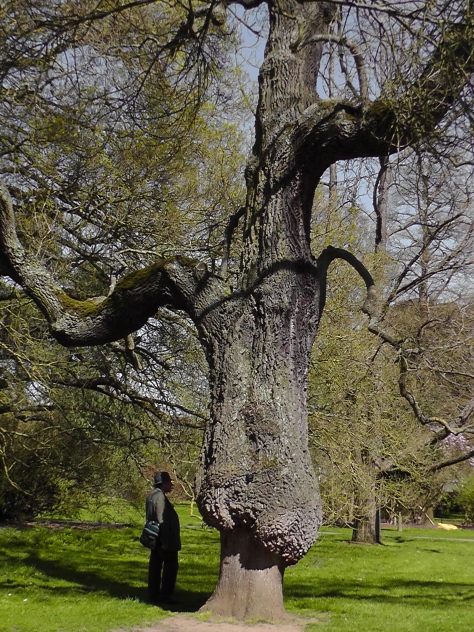
EXCELSIOR GRAFTED ONTO ROOTSTOCK~UK
WELL PROVEN TREATMENT OPTIONS
IT COSTS $25 PER YEAR, OR $250 TOTAL TO PROTECT AN ASH FOR 10 YEARS, OR EAB FORCES YOU TO PAY $1500-$6000 IN ONE LUMP SUM TO CUT IT DOWN.
Homeowners can now purchase and easily apply same full strength insecticide, or pay more to have professional apply.
NO HARM TO ENVIRONMENT OR BEES! Owners can apply A 100% successful naturally produced treatment containing Neem tree’s Azadirachtin, called Aza-sol. Also Tree-Azin, a trunk injected product which lasts one year!

IN LARGER TREES OVER 35 YEARS OLD, IF TREE ALREADY SHOWS SIGNS OF EAB DECLINE, OWNER MUST HAVE TRUNK INJECTED FIRST.
HOMEOWNERS CAN SUCCESSFULLY DRENCH OR SOIL INJECT LARGE TREES OVER 100 YEARS OLD THEMSELVES. BUT MUST BE “PREVENTIVELY” APPLIED WHEN TREE IS STILL 100% HEALTHY. LARGE TREES NEED TWO YEARS OF CONSECUTIVE APPLICATIONS, TO “PRIME” INSECTICIDE UPTAKE BEFORE ANY EAB DAMAGE OCCURS
OWNERS OF SMALLER TREES UNDER AGE 35 ALREADY SHOWING SIGNS OF EAB, CAN SAFELY APPLY DRENCH AT “DOUBLE THE DOSE” RATE
Drench or soil injections must be applied in April, just after ground no longer frozen. Or by no later than first week of may latest! Otherwise any applications made after mid-May are a total waste! Because tree needs one month to uptake Imidacloprid drench, and begin killing that years young EAB by June 1st.
CAUTION: Imidacloprid only kills 1st and 2nd Instar larval stages from late May to last week of June, thus preventing EAB from reaching 3rd & 4th instars during July & August, when they are most damaging larval size .

Trunk injections of Tree-age can be “curativly” applied as late as august 1st, and instantly begin killing all EAB within 72 hours! It is much better to immediately begin treating an already declining tree as late as October, as long as it still has leaves. Rather than waiting until next spring, and allowing EAB more time to cause unnecessary damage over fall.
Trunk injection sites cause no permanent wounding, and completely disappear by two years.

MOST NEW SUCKER BRANCH GROWTH, CALLED EPICORMIC SHOOTS AND WATER SPROUTS, MUST BE RETAINED ON DAMAGED TREES!
The largest and fastest grown suckers should be subordinated or removed, since they are weakly attached, and too pithy to retain as crown restoration branch. Slower growing suckers should at least be temporarily retained, as root system which is not damaged by EAB, needs Solar energy that was lost when full crown died back. These emergency shoots strengthen their attachment to trunk very well over time. Trunk suckers help tree compartmentalize over past years EAB galleries, and shade recovering bark from direct sunlight.
Past Woodpecker damage should only be a cosmetic issue, when deciding if a tree is safe and worthy enough to save. Woodpeckers forage for hibernating larvae which no longer cause damage to tree after that stage. Except for inconsequential “D” shaped exit hole unique to EAB species.
Bark splits and Flecking are mostly caused by damaged tree producing all new wood over previous galleries in Spring, when EAB populations exit tree to mate elsewhere. Not because bark layer has died and is caving in directly over void caused by borer galleries. I have personally observed a 45 year old tree once protected with treatment, completely cover over dead Trunk tissue stretching the size of two side by side Basketballs, Whole new bark layer and all!
Remember, these endangered hardwood trees were slowly preparing to live out their 160 to 300 year life spans, with root systems storing up enough energy for disastrous event. Such as whole tree decapitated by moving Ice flow, allowing root system to totally regrow whole new tree above ground. A normal occurrence in a forest.

HOW EAB IS CAUSING ITS ONLY FOOD SOURCE OF LIVING ASH TREES, TO BECOME FOREVER EXTINCT IN THE WILD. THUS THE GLUTIONUSS BORERS ARE UNKNOWINGLY CAUSING THEIR OWN INEVITABLE EXTINCTION IN THE END AS WELL.
Since Wild “Orphan” Saplings Which Represent Last Living Generation Of Ash Are Being Inevitably Killed Off Long Before Reaching Seeding Age Of 10, After Reaching Three Inches In Stem Size. Ancient Ash Which Began On The North American Continent, Uniquely Evolving To Survive And Thrive Within Every Woodland Over The Last 200,000 Million Years, Will Disappear Forever In The Wild Within 12 To 15 Years.
Once Exponentially Building “Infestation” Populations Crash Below Damaging Thresholds Locally Within Some 10 Years By Killing Off Their Remaining Unprotected Food Source. Treated Trees Will No Longer Need Protection, Even If New EAB Are Reintroduced Locally Sometime Later. Since Borers Would Never Have Enough Remaining Trees Available To Rebuild Populations Past Infestation Threshold Levels Ever Again.

With a complete location list of all public & private treated trees, Municipalities can then Coordinate final treatment applications with Scientists from Regional Arboretum and State agricultural agencies. This act would Scientifically assure last few straggler EAB in area were efficiently killed off. Especially since unlike Dutch Elm disease surviving on new wild Elms before inevitably killing them off only after age 25, EAB completely kills off its living food supply and no new trees survive.
LIKE A FAMILY HEIRLOOM PASSED DOWN FROM GENERATION TO GENERATION
Once these long lived “Heritage” trees representing last precious living connections back to settlers & founders who planted them are unceremoniously felled, even though they were expected to survive some 300-600 years…Countless future generations will be robbed of their right to be first humans since settlers era, to once again witness native organisms reach true maturity ages. Something not witnessed by humans since last of old growth examples were all harvested during 1800’s settlers era.
Because settlers did not, or could not plant long lived White & Burr Oak back then. Presently what little remains of communities human planted “heritage” tree collections, are represented by shorter lived Catalpa, Red Oak, Poplar and Silver Maple nearing the end of their 120-160 year lifespans . After those settler planted examples disappear, only scattered Sycamores and Sugar/Black Maples which can live over 250 years will remain. Ironically even our grandparents Yew bushes that still adorn their old front yards, which are only now slowly developing into trees over last 50-130 years. Are today being cut down in great numbers, to make way for new plantings in the name of present day Landscape modernizations. Even native Mulberry trees, a local species known for its 1000 year lifespan and abundant production of fruits faithfully feeding countless types of wildlife. Are today forced to make way for ever expanding backyard patios, and wide swaths of cement poured over their root systems.

THE LONGEST LIST, OF MOST SOUGHT AFTER ATTRIBUTES EARNING AMERICAN ASH, SOLE TITLE OF WORLD’S BEST URBAN TREE SPECIES.
Surpassing even Elm, Oak, Locust, Sycamore/Plane!
Most flood tolerant
Best at surviving deep planting & todays Mulch mounding fad
Best four year extended drought tolerant
Strong Apical dominant, young central leader production*
Lowest required pruning maintenance from planting to Maturity*
(* Until Marshall seedless and other Cultivars produced in nurseries after 1958)
Best survival & recovery after construction disturbance
Tied with Honey Locust for best survival chance, when facing stem girdling root production girdling
Proven Longest probable “Urban” lifespan~compared to other common City tree species
Top Most popularly planted urban species until Elm fad of 1890’s
Regained that top position during the mid 1950’s after Elm could no longer be planted because of disease
The top tree species which can survive by easily Compartmentalizing over repeat trunk injection damage. {According to Dr. Alex Shigo at el (& others)}
In fact, experts now confidently state how no urban species but superior proven Ash capable of recovery from such biblical in scope damage. Especially not the Maples nor Lindens, not even beloved Oaks and Elms would have had a chance.
And now after an embarrassing 98% of every new tree replacing Ash continues to arrive from Nurseries with tree trunks already too deep in rootballs…….
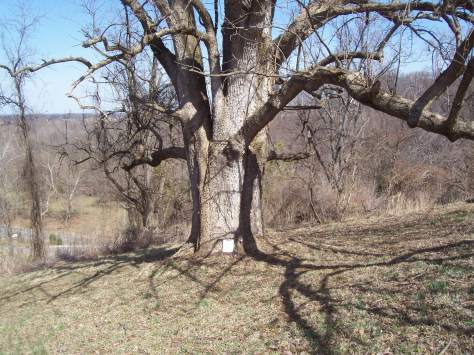



TODAY’S PLANNING FOR EAB’S INEVITABLE ARRIVAL CAN BE BUILT FROM PREVIOUS 14 YEARS OF COUNTLESS MUNICIPALITIES WELL DOCUMENTED SUCESSES AND FAILIURE THROUGHOUT THE MIDWEST
Details on Municipal EAB preparation & planning
After surveying for a municipalities best examples of Ash to possibly preserve for future generations with temporary treatment, a community Co-op program must be implemented by local Governmental entities to prevent individual property owners from paying high cost of insecticide applications reapplied every two during peak infestation outbreak. This is inexpensively achieved by licensing several “In house” public works staff through state approved pesticide certificates and purchasing product in bulk quantities shared by municipalities throughout local county, along with sharing of insecticide application equipment.
Otherwise professional tree care companies who purchase product for $4 per DBH charge both Public & Private customers from $9-$12 per DBH after adding on large profit margin along with labor, supplies, insurance, equipment and mileage from shop.
Properly applied drench or soil injection applications can preventively protect even the largest sized trees.

Here in Chicago, by City purchasing product in bulk and having In-house workers apply, it costs only $46-$60 per tree every three years to trunk inject. God-sent results on over 100,000 treated trees only tainted by few “Partial” fails after only half of trunk received injections. What examples of comparison though as half of treated tree is 100% healthy and alive while untreated portion succumbed to borers!
By “Proactively” drenching every other or third public tree under a century old which today landscape entire blocks with monoculture of Ash, temporary treatment will allow younger replacement trees in between to enlarge, rather than clearing whole parkways, then planting new.
Inexpensive Drench applications can temporarily protect large portions of municipal Ash tree collections. Then these trees can be slowly removed and replaced over a decade on our planed time schedule, rather than Emerald Ash borer dictating when they die.

Gilligan’s island theme…Sit Right Back, And I Will Share A Tale, Tale Of A Faithfully Protected Tree…No More Of Its Kind Still Exist Today, Except For A Few Saved Patriotically. Like Robinson Caruso, A Long Gone Primitive Species That Went Extinct, After Mankind’s Overpowering Greed. None Still Exist Today, Except For The Ones Saved By Scottie Ash Tree Seed. Only Man Could Kill Off His Most Perfect Urban Surviving Tree, With Only Maple Left Now Producing Its Iconic Helicopter Seeds, They Only Live Half As Long, And Die Before Age 30…NOW…Because Humans Prune Them So Horribly.

Spending $30 every two-three yrs. for a period of some 12 to 15 years after first local Borers detected, until danger from EAB infestations inevitably passes locally spreads low total cost of $300 out over long time period.
Verses public safety emergency causing municipality to borrow 10 or more years into their future to fund dead tree removals, let alone priority for installing replacements.
This municipality option per tree costs $300 for removal, $60 to de-stump, $300 to replace plus $200 to plant, $10 to mulch, and $30 per year to water. Add to that $60 X 2 for trees previous trimmings before eventually dying, for extending trees life one more year and removal of lower trunk’s copious Sucker shoots obstructing driver’s views.
REPLACEMENT TREES MUST BE FORMATIVELY PRUNED FOR STRONG APICAL CENTRAL LEADER OVER ITS FIRST 15 YEARS, BEGINNING WITHIN 3 YEARS OF INSTALLATION!
Final costs of “Battling EAB” continue to rise long after dead trees removed as first and then second replacement trees die off when those same property owners who did not care to save their Ash never water their new parkway tree.
Now after three years of extended drought from 2012 to 2014 some municipalities are spending $30,000 to contract for regular watering of their new public tree collections.

Unfortunately Municipalities which spent the most to lose their communities whole Ash tree collection are continuing to experience “Tree issues” AFTER Mulch is improperly applied around base of new fragile trees. Scientifically it is exactly if these trees were “Planted too deeply” when carefully installed, and will slowly suffer over their short 30 years of life having their trunks choked off by girdling roots produced within improper mulch layer.
NEW TREES MUST BE DUG OUT OF NURSERY AND INSTALLED AT THE ROOT FLARE LEVEL!! THIS IS WHY BURLAP MUST BE CUT BACK, THUS REVEALING IF ROOT FLARE IS BURIED BELOW 2″ OR MORE ADDED SOIL MEDIUM.

DETAILS OF HOW EVENT UNFOLDS WITHIN NATIVE FORESTS
locations containing many Ash trees such as Forests and Parks, is utilized by exponentially building EAB population which then kill off every unprotected tree within a quick 3-4 years. Event unfolds so blazingly fast, that most forest trees die before woodpeckers even begin damaging bark. First, a low number of scattered individual trees succumb to borers before fall. By August/September of year two, almost 3/4th of living trees completely die off before they can produce emergency Epinormic trunk shoots to stay alive. By year three, unlike urban trees which decline over five summers, every mature example over age 20 fails before existing root system undamaged by borers can produce stump shoots around bottom of trunks. For example, if a completely healthy tree would be planted within a forest experiencing “Four year death” event, peaking infestation populations of EAB would completely devour every inch of living Phloem & Cambium layer down to where trunk enters soil. Since the inner wood of living Ash only contains 2% moisture, once dead they quickly begin drying out. Because of this “Species trait”, declining trees should be promptly harvested before heartwood vertically splits apart along wind stress flexing points.
Frederick Law Olmsted Ash

